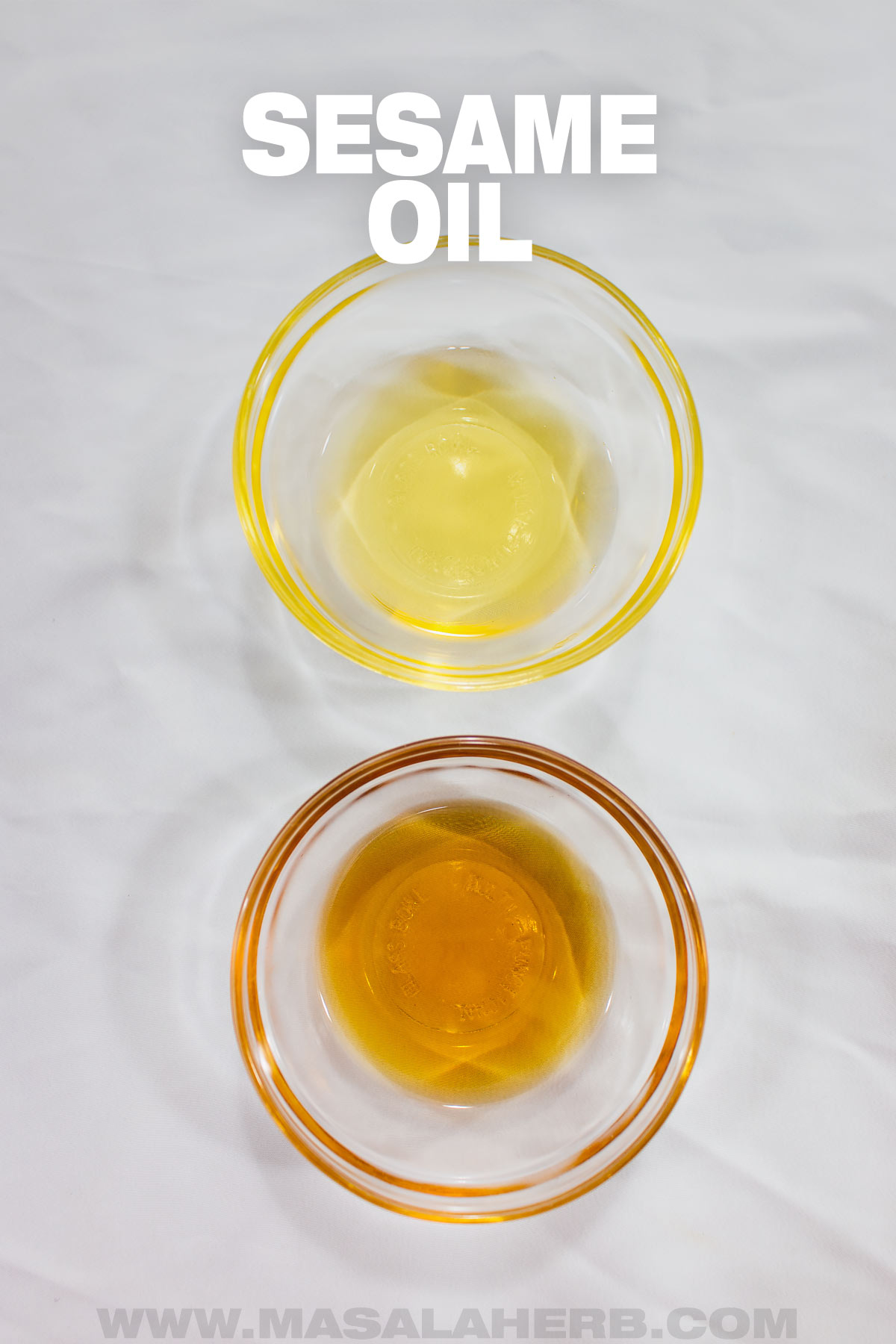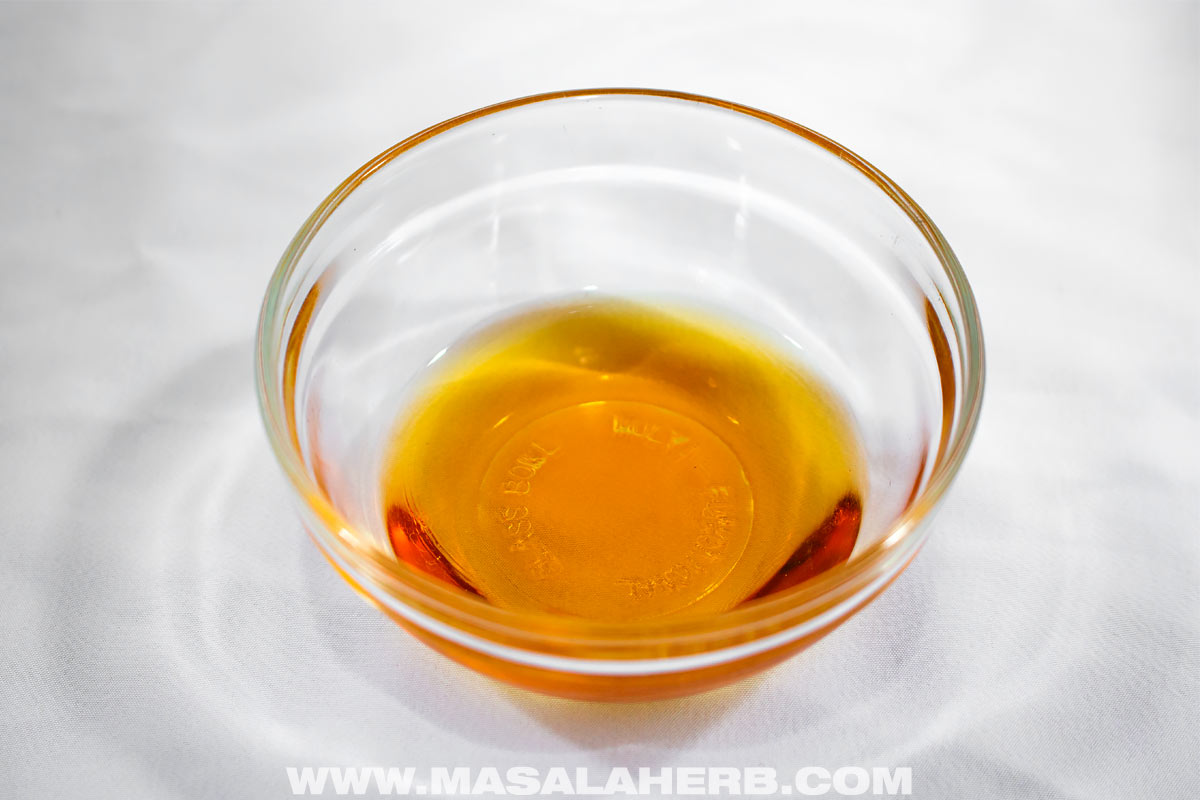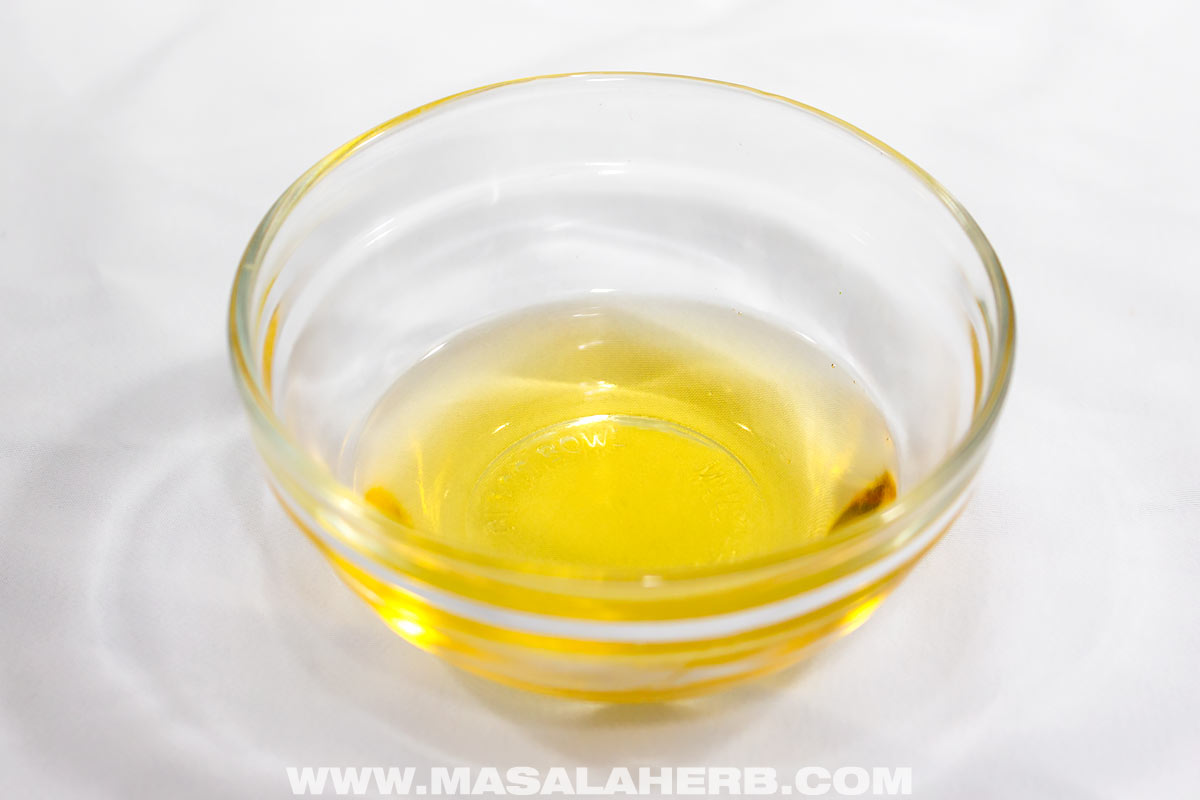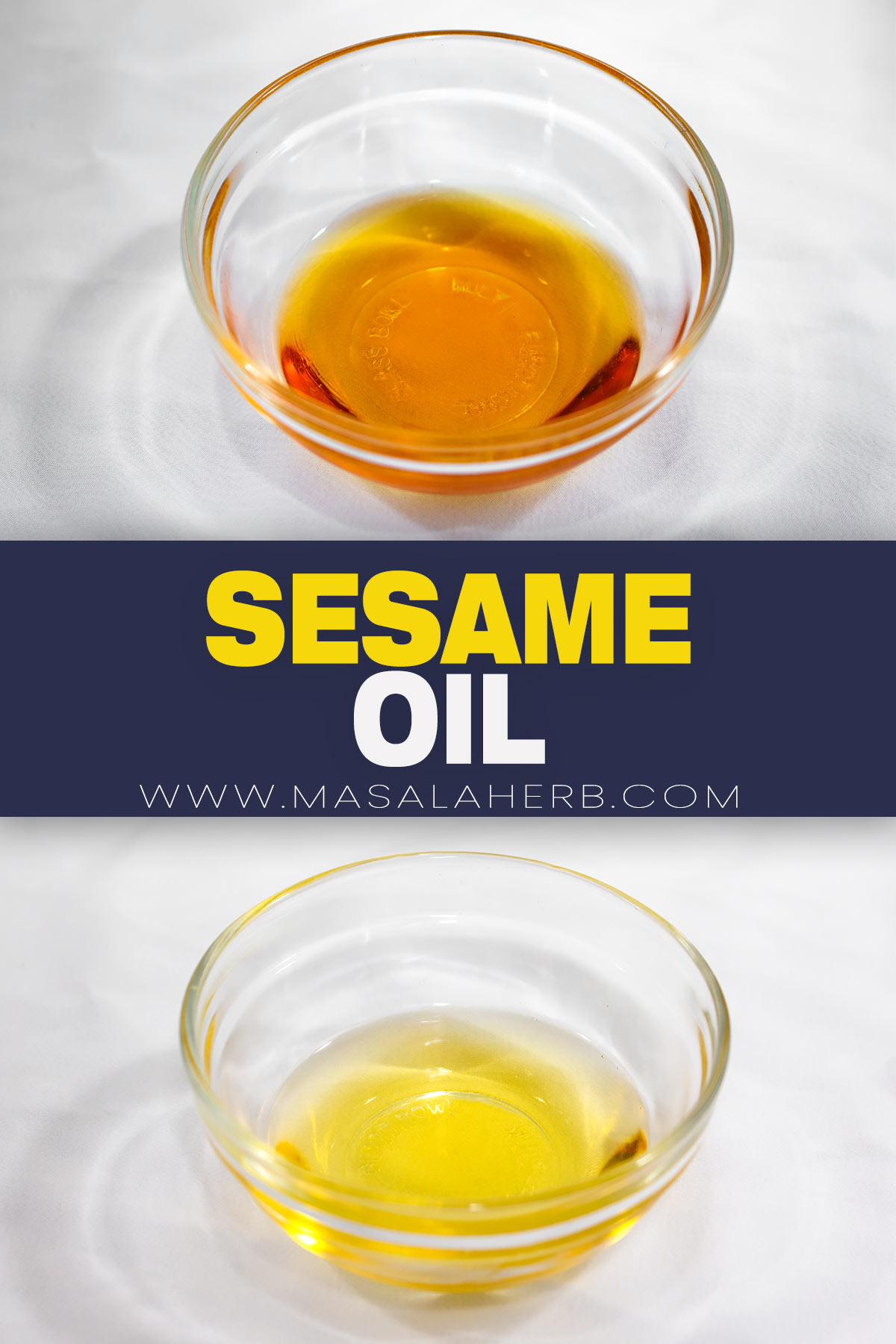Sesame oil has many fantastic uses in Asian cuisine, but it can be a confusing ingredient!
Here you will learn about the different types, how to use them, the smoking point, substitutions and the best way to store your sesame oil.


Global Food Recipes
with Spices and Herbs
Free E-Book available for a limited time. Grab yours now and get instantly inspired!
You missed out!
📕 What is Sesame Oil?
Sesame oil is extracted from Sesame seeds, which come in white or black varieties.
The plant grows vastly across the hot and dry, hardy regions in Asia, Africa, and Central/South America.
It is commercially grown as an oil seed, as sesame oil is one of the oldest and the most consumed oils in the world.
It also finds uses outside the kitchen in various industries as a base, such as in cosmetics, perfumery, and in oil paint.
As the plain seeds are edible, they are eaten in many ways. Whole, ground, crushed and lastly, for oil.
They’re crunchy little seeds and add a nutty flavor and texture to everything.
Both, White and Black sesame seeds are used to obtain oil.
While oil from the white seeds is consumed as food, the variant from black sesame seeds is used for medicinal and healing purposes. This is also the reason it is known as the Queen of oils.
🥡 Types and Uses
There are two main types of sesame oils.
Dark sesame oil made with toasted sesame seeds, and light sesame oil, made with non-toasted seeds.
You can easily differentiate between them due to their color difference.
The Dark one has a caramel like color. The light one is pale and looks more like sunflower oil or simple canola oil.
You can get various qualities between these two main types of sesame oils. They can be...
- cold pressed
- extracted from organic sesame seeds
- pressed from black sesame seeds instead of white seeds
Cold pressed, or unrefined oils, are naturally pricier, and the case is no different with sesame oil. As no heat is applied and the oil is extracted mechanically, it retains most of its nutrients and flavors.
Both oils are mainly used in Indian, Asian, African, and middle eastern cuisine.
Dark Sesame Oil aka Toasted Sesame Oil
Dark sesame oil has a deeper and nuttier flavor, and a little goes a long way. Japanese Kadoya Sesame Oil is for example, a classic dark sesame oil.
Therefore, it is used as a seasoning to flavor stir fries, salads, sauces, dips, rice, and finger food in Asian cuisine.

Darker Sesame Oil is less refined and has a lower smoking point, making it unsuitable as a stir-frying oil.
Since the dark sesame oil is much more potent and richer, it is also on the expensive side. It is considered a seasoning oil that adds flavor to a meal.
Is fried rice your favorite midnight meal too? Next time when you have a bottle of sesame oil lying around, add in a few tablespoons of some dark sesame oil to amp up your favorite homemade fried rice.
Here are some more recipes that call for toasted dark sesame seed oil:
- Cabbage and Chicken Stir Fry
- Yaki Udon Noodles with Chicken
- Japanese Wafu Salad Dressing
- Ginger Dressing with Chinese Cabbage
- Spiced Bok Choy Soup
- Salmon Furikake Seasoning to Season Rice
Light Sesame Oil Uses
Light sesame oil can be used as a cooking oil, like any other, and it will lend a delightful flavor to every dish cooked with it.
You can use it for sautéing and stir-frying. For example, we made a spicy sesame oil, Japanese chili oil, with light sesame oil.
Sesame oil also works great in baking as it does not have a heady odor and taste. You can use it to make cookies, for example.
The Semi-refined, and almost transparent oil, has a neutral taste and is a great choice for everyday cooking due to its higher smoking point at 450 Fahrenheit (ca. 230 degree Celsius).

🥄 Sesame Oil Substitute
Depending on which sesame oil is called in a recipe, you will have to substitute for something that comes close to either the toasted sesame oil or the light sesame oil.
Light Sesame Oil – That one is easy! You can use a neutral tasting regular vegetable oil, sunflower oil, canola oil or even avocado oil instead of a light sesame oil as it is a refined high smoking point oil.
Dark Toasted Sesame Oil – Every dark sesame oil can taste uniquely so substituting this oil as a topping is a bit more difficult. You can use a cold pressed peanut oil in Asian dishes as a topping, but I don't think you can substitute dark sesame oil in any other way. Even peanut oil will make a huge flavor difference. Treat dark sesame oil as a seasoning ingredient!
🍱 Storing
Sesame oil should preferably be stored in an airtight glass bottle, in a dark and cool place.
Room temperature kitchen cabinets or the pantry make a good spot. You must never mix old and fresh sesame oil. You should store them separately.
Unrefined sesame oil turns bad faster. A strong and unpleasant smell is an indication that the oil has become rancid. Check the best before date on your bottle!
Sesame oil should be consumed as quickly as possible to make the most out of the ingredient.
You can also store sesame oil in the refrigerator if the climate is tropical and too hot, but it might then become a little cloudy. However, you can use it nevertheless.
💭 FAQs
The smoking point for sesame oil is 450 Fahrenheit (ca. 230 degree Celsius). This is regarding the light sesame oil, which you can use as a regular cooking oil. Toasted dark sesame oil has a much lower smoking point and should be only used lightly heated or as a topping.
You can easily grab a bottle or two of dark as well as light sesame oil in specialty Asian or Indian stores. You can also get it online on Amazon and Walmart.
Sesame seed allergies are as common as soy and fish allergies. Common symptoms include everything from mild hives to anaphylaxis. If you’re allergic to sesame seeds, you must avoid sesame oil.
Sesame oil contains on average about 120 calories per tbsp.
The taste is what sets them apart. True virgin olive oil is spicy peppery, while sesame oil is nutty with bitter undertones.
The ancient Babylonians and Egyptians were known to use sesame oil as a medicine. Sesame seeds may have originated in India and sesame oil was the main oil in Ancient southern and northern India. The seeds are known as Til in Hindi and oil is called Tel, which suggests that the sesame name was transferred to the word “oil”. The botanical name of sesame is also sesamum indicum. You can find a great read about this humble seed in the book called “a historical dictionary of Indian Food” by K. T. Achaya.
The crop finds mention across history, ranging from the 5th Century B.C to the modern times. Greek and Roman literature is dotted with usage of sesame seeds and oil. Ground sesame seeds were also used as flour by the Egyptians. It was and is still vastly used by the Indians, Chinese, and the Japanese routinely, in their everyday cooking.


Comments
No Comments